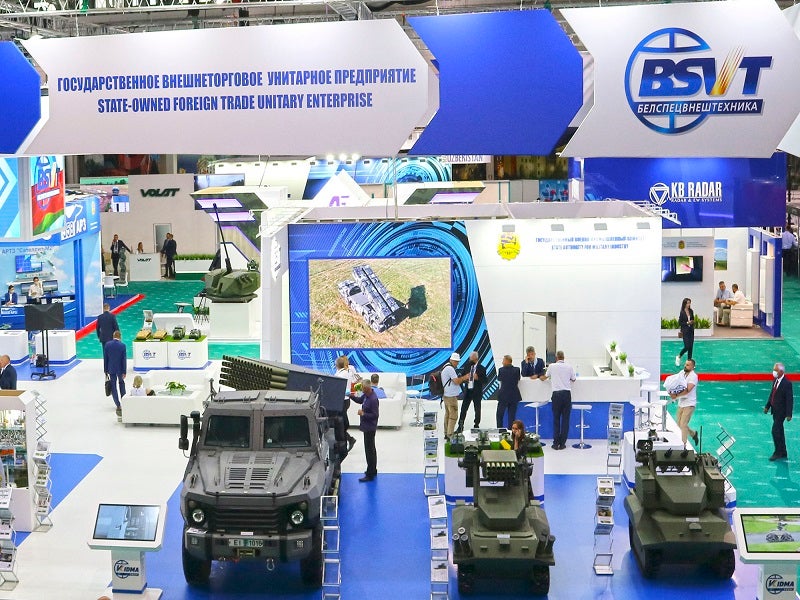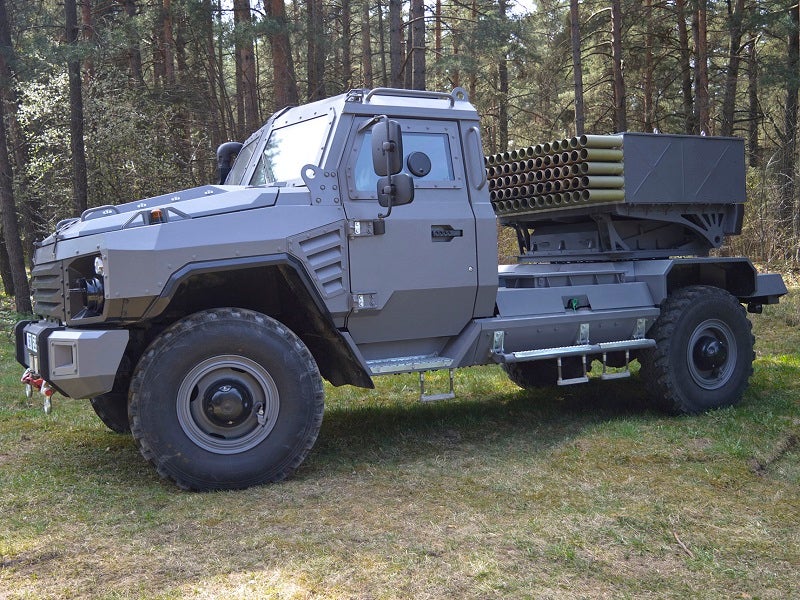Understand the impact of the Ukraine conflict from a cross-sector perspective with the Global Data Executive Briefing: Ukraine Conflict
The Flute multiple launch rocket system (MLRS) is a mobile rocket launching system mounted on the Asilak light armoured vehicle for close fire support. It was developed by BSVT-New Technologies, a state-owned technology company based in Belarus.
The first firing tests of the Flute MLRS were performed at the 230th Obuz-Lesnovsky combined training area and test site of the Belarusian Defence Ministry in November 2021. The tests were conducted to validate the system’s preparation time and the ability to shoot and change position quickly.
Flute MLRS features
The MLRS vehicle is equipped with 80 launch tubes for S-8 missiles. The Flute MLRS can be deployed to provide close fire support to land forces and special operations forces.
The weapon system can destroy sheltered troops, as well as unarmoured and light armoured vehicles. It can also engage artillery and mortar batteries and support other combat missions.
The launcher has a minimum elevation of 0° and a maximum elevation of 55°.
Vehicle platform
The Asilak is a multi-purpose light-armoured vehicle designed to provide high cross-country mobility. It can protect the troops against threats such as mines, landmines, and projectiles fired from small arms. Protection features of the vehicle include a double anti-mine bottom and a general armour plating with protection level up to STANAG Level 2.
The MLRS platform can accommodate a crew of two. It has a laden mass of 6,970kg and can carry a maximum payload of 2,150kg. The vehicle has an overall length of 5.8m, a width of 2.26m, and an overall height of 2.35m.
Command and control system
MLRS features the Alliance command, control, communications, computers and intelligence (C4I) system developed by BSVT.
The C4I system considers each vehicle and soldier in the field an information unit within the system. The information from the units is displayed over a digital map in real-time to provide enhanced situational awareness to commanders and chief officers.
The information contains data about own positions, positions of allied troops, as well as detected and tracked targets on the battlefield.
The Alliance system uses video processing algorithms based on neural networks and computer vision to enable target detection and tracking. The cryptographic protection feature prevents unauthorised access of the system data.
The automated commander workstation of the Flute MLRS is integrated with the Alliance system. The functions of the workstation include ballistic, meteorological, topographic, and geodetic support.
Other operations that can be performed by the workstation include artillery fire control, remote entry of flight mission of the rocket data, as well as target data reception and transmission. The target is automatically displayed on the electronic map, upon detection.
Navigation system onboard Flute MLRS
Flute MLRS is also equipped with onboard navigation system, which provides the current co-ordinates of the MLRS in real-time.
The navigation system determines the current angular orientation of the course, roll and pitch, as well as motion parameters such as distance travelled and speed. It also provides indication and calculation of the MLRS range.
The system guides the launch tubes homing from the cabin using the gunner’s console.
Warhead
The S-8 unguided rocket can carry high-explosive fragmentation, tandem hollow charge, bunker buster and high-explosive fragmentation penetrating warheads.
Flute MLRS variants
Flute is available in two variants, namely MLRS Flute 80 and MLRS Flute 122. The variants have been designated based on the missile calibre.
Flute-80 has 80 launch tubes and can carry an 80mm unguided rocket S-8. It has a maximum firing range of 3,000m. The flight speed of the S-8 rocket varies between 400m/s and 750m/s.
The Flute-122 variant can carry an unguided rocket M-21OF. Fitted with 16 launch tubes, it provides a maximum firing range of 40,000m. The flight speed range of the M-21OF rocket is between 400m/s and 750m/s.






